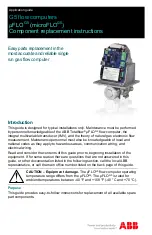
2-4 Setting Up the System
Note
If the system displays a message indicating that system settings
have changed, run the BIOS Setup Utility (see Chapter 3, “Configuring the
System”).
On systems with Windows 2000, enter your password at the log-on box.
On systems loaded with the Windows NT 4.0 operating system, press
Ctrl Alt Del
when prompted on-screen to do so. The log-on box appears
for entering a password.
Shutdown
Follow these steps to power off your system.
1.
If the system is in sleep mode (power lamp is amber and screen is
blank), press a key or move the mouse to take it out of sleep mode
(see “Power Saving Operation” in the next section).
2.
Save your work and exit all open application programs.
3.
Make sure that the hard drive, diskette drive, and any other drives are
not in use. A lit device lamp indicates that the device is in use.
Wait until all applications are saved and closed
before using the Windows shut down procedures in step 4.
Unless absolutely necessary, never power off the system if the system
power lamp is amber (sleep mode), if the hard drive lamp, diskette drive,
or other device lamp is flashing, or if any applications are open.
Information on the device might be lost or damaged.
4.
Click
Start
on the taskbar, then point to and click
Shut Down
. Select
Shut down the computer
, then click
Yes
or press
Enter
for shut
down.
!
If the system is configured with Windows 98 or Windows 2000,
the system shuts down automatically after a short interval.
!
If your system is configured with Windows NT, perform a
Windows shutdown, then power off the system by pressing and
holding in the power button for four seconds or longer.
5.
Turn off power to your monitor.
















































